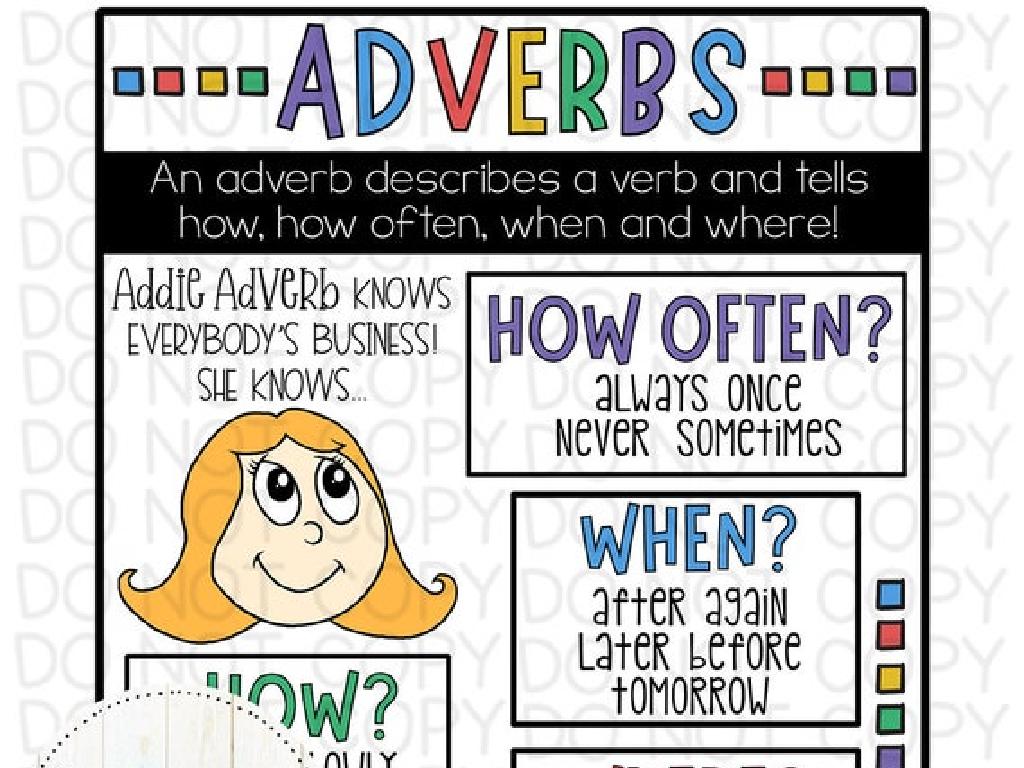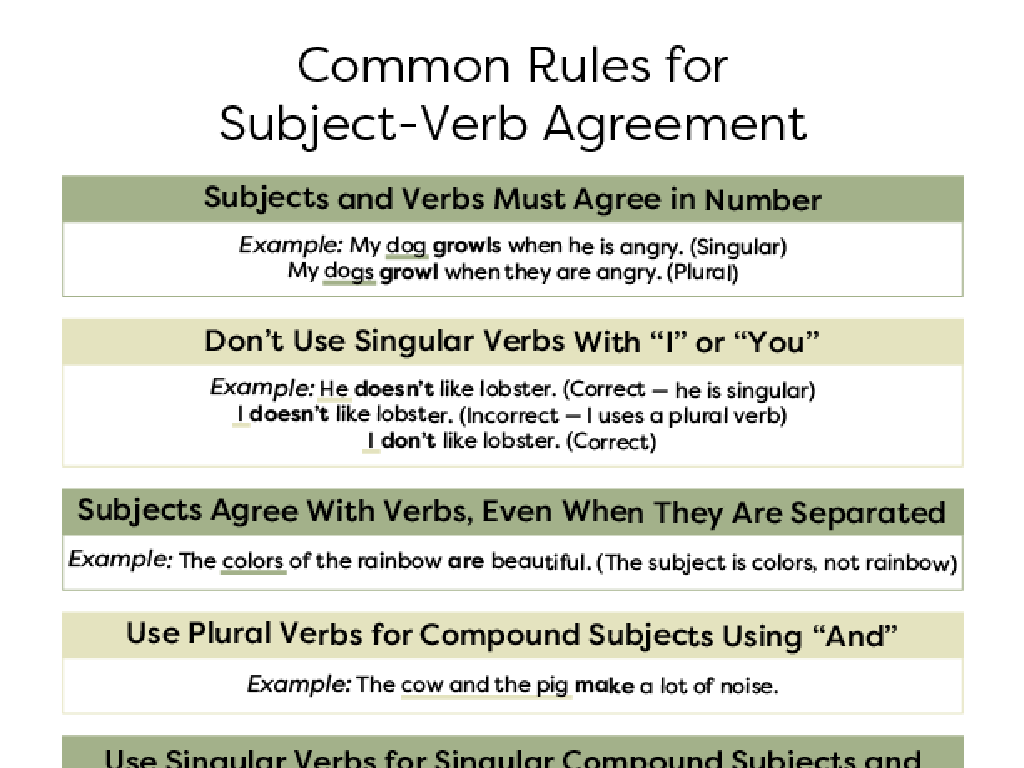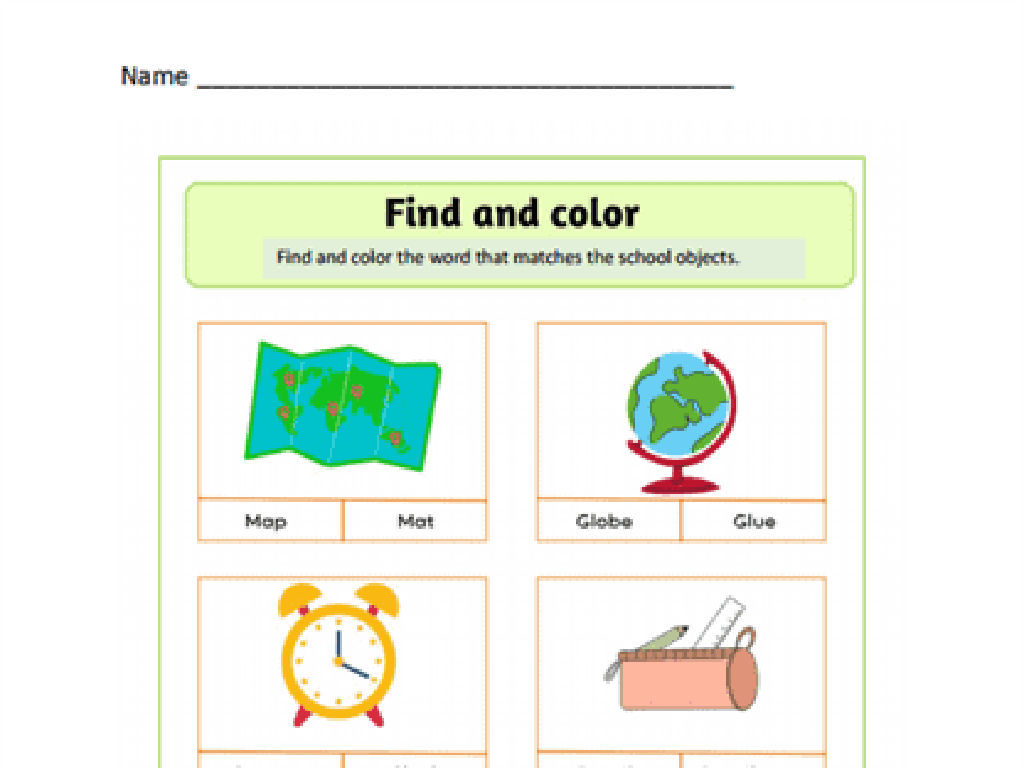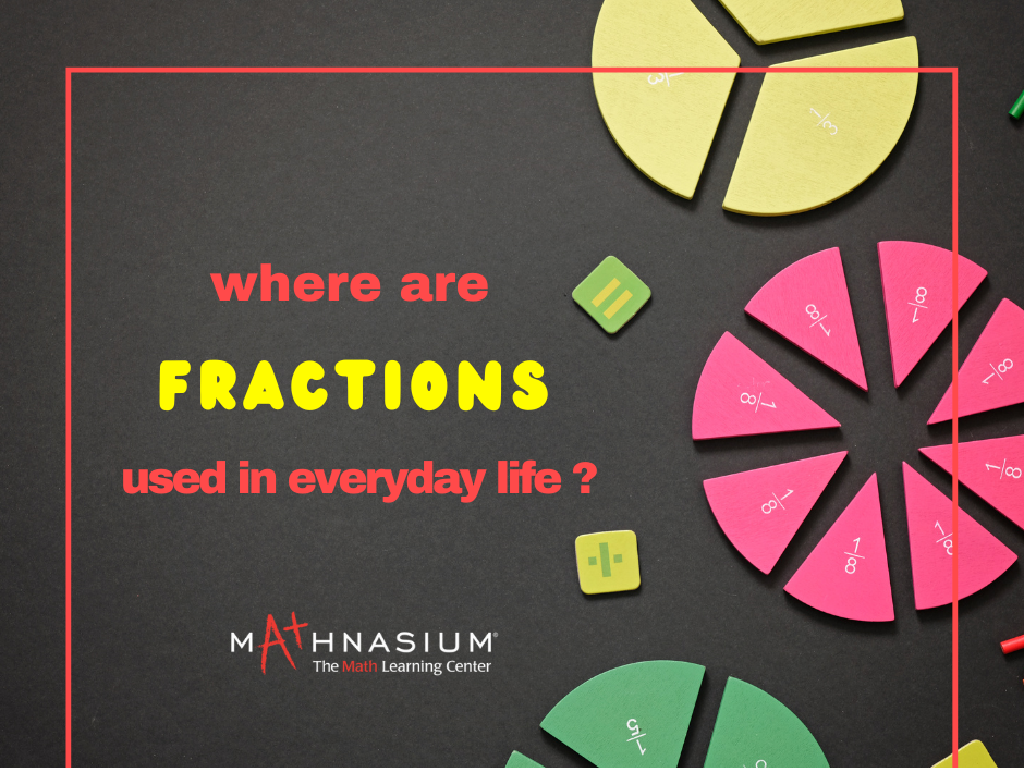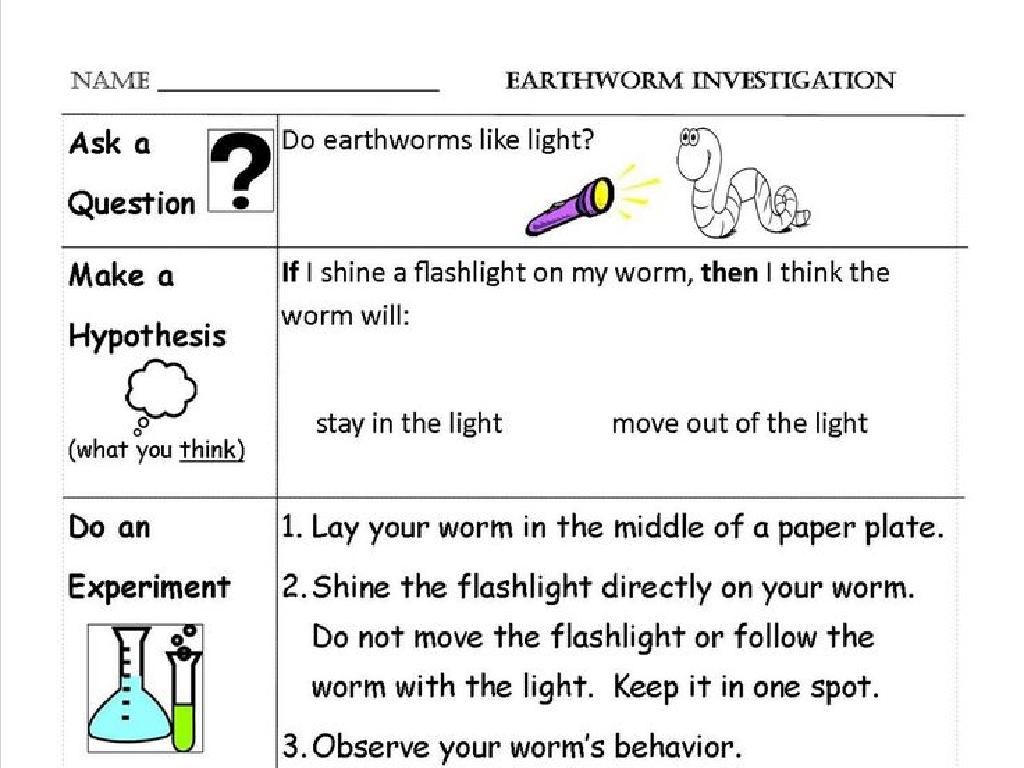Round To The Nearest Ten Or Hundred Using A Number Line
Subject: Math
Grade: Third grade
Topic: Rounding
Please LOG IN to download the presentation. Access is available to registered users only.
View More Content
Welcome to Rounding Numbers!
– Learn what rounding means
– Round to the nearest ten
– If a number ends in 1-4, round down. Ends in 5-9, round up.
– Round to the nearest hundred
– Look at the tens digit to decide to round up or down.
– Why rounding is helpful
– Rounding makes numbers easier to work with in daily life.
|
This slide introduces the concept of rounding numbers to the nearest ten or hundred. Begin by explaining that rounding is a way to simplify numbers, making them easier to work with. Demonstrate rounding to the nearest ten by using a number line and showing that numbers ending in 1 through 4 round down to the lower ten, while those ending in 5 through 9 round up to the higher ten. Similarly, for rounding to the nearest hundred, guide students to look at the tens digit. Emphasize the practicality of rounding in everyday situations such as estimating costs and distances. Prepare to engage the class with examples and interactive number line activities to solidify their understanding.
Understanding Rounding on a Number Line
– Rounding makes numbers simpler
– Keeps value close to original
– Results are less accurate, but easier
– Example: 73 rounded to nearest ten
– 73 is between 70 and 80 on the number line, but closer to 70
|
Rounding is a fundamental math skill that simplifies numbers while maintaining a value that is close to the original number. It’s important for students to understand that while the rounded number is less precise, it is often much easier to work with, especially for quick estimations or when dealing with large numbers. For example, if we have the number 73 and we want to round it to the nearest ten, we look at the number line and see which multiple of ten it is closest to. Since 73 is closer to 70 than to 80, we round down to 70. This concept will be practiced with various numbers to ensure students are comfortable with rounding to the nearest ten and hundred.
Rounding with a Number Line
– Number lines show numbers in order
– Like a ruler for numbers, it helps us compare
– Find the nearest ten or hundred
– Look for the multiples of 10 or 100 around your number
– Mark your number on the line
– Place a point above your number on the line
– Decide which mark is closest
– Is your number closer to the lower or higher mark?
|
This slide introduces students to the concept of using a number line to round numbers to the nearest ten or hundred. Start by explaining how a number line works and how it can be used as a visual aid to compare numbers. Show them how to locate a number on the line and then identify the nearest ten or hundred by looking at the multiples of 10 or 100 that are closest to it. Encourage students to practice by marking different numbers on a number line and deciding whether to round up or down based on which mark the number is closest to. Provide several examples and possibly a mini-activity where students can come up to the board and round numbers on a number line in front of the class.
Rounding to the Nearest Ten
– Locate the number on a number line
– Observe the nearest tens around it
– If our number is 35, the nearest tens are 30 and 40
– Determine the closest ten
– Is 35 closer to 30 or 40 on the number line?
– Practice rounding with examples
– Example: Round 35 to 40 because it’s closer to 40 than 30
|
This slide introduces students to the concept of rounding numbers to the nearest ten using a number line. Start by explaining how to find a specific number on the number line. Then, guide students to identify the nearest tens to that number, which are the multiples of ten that come just before and after the number. Next, help them to understand how to decide which of these two tens is closest to the number in question. To reinforce the concept, provide several examples and encourage students to practice by rounding different numbers to the nearest ten. For instance, ask them to round 23, 47, or 76 and explain their reasoning.
Rounding to the Nearest Hundred
– Understand rounding hundreds
– Find hundreds before and after
– If we have 250, the hundreds before and after are 200 and 300.
– Choose closest hundred
– Is 250 closer to 200 or 300? It’s closer to 300!
– Practice with examples
– Example: Round 453 to the nearest hundred.
|
This slide introduces students to the concept of rounding numbers to the nearest hundred on a number line. Start by explaining that rounding to the nearest hundred is similar to rounding to the nearest ten, but instead of looking at the tens place, we look at the hundreds place. Show them how to find the nearest hundred before and after the number in question. Then, guide them to choose the hundred that the number is closest to. For example, if the number is 250, the nearest hundreds are 200 and 300. Since 250 is exactly halfway, we round up to 300. Provide several examples and encourage students to practice with numbers that are close to a hundred mark and those that are not. This will help them understand the concept of rounding up or down based on which hundred is nearest.
Let’s Practice Rounding!
– Example 1: Round 68 to nearest ten
– Is 68 closer to 70 or 60 on the number line?
– Example 2: Round 157 to nearest hundred
– Does 157 round up to 200 or down to 100?
– Work together to find answers
– Understand rounding on number line
– Visualize the position of numbers and decide which ten or hundred they’re closest to.
|
This slide is designed for a class activity where students will practice rounding numbers to the nearest ten or hundred using a number line. For example 1, guide the students to see that 68 is closer to 70 than to 60 on the number line, so it rounds up to 70. For example 2, show that 157 is closer to 160 than to 150, and since 160 is closer to 200 than to 100 on the number line, 157 rounds up to 200. Encourage students to work in pairs or groups to discuss and find the answers, promoting collaborative learning. The teacher should walk around the classroom to assist and ensure that students understand how to use the number line for rounding. Prepare additional similar examples for students who finish early or need extra practice.
Class Activity: Rounding Race
– Split into teams for a rounding race
– Use number lines to round numbers
– Round five numbers to the nearest ten
– Example: 34 rounds to 30, 38 rounds to 40
– Round five numbers to the nearest hundred
– Example: 250 rounds to 300, 245 rounds to 200
|
This activity is designed to make learning about rounding numbers interactive and fun. Divide the class into small teams to encourage collaboration. Provide each team with a number line and a set of numbers to round. Make sure they understand that rounding to the nearest ten means looking at the ones digit, and rounding to the nearest hundred means looking at the tens and ones digits together. The goal is to reinforce the concept of rounding and to provide practice in a game format. Offer a small prize for the winning team to motivate the students. Possible variations of the activity could include a relay race where each student rounds one number before passing the number line to a teammate, or a ’rounding bee’ where students round numbers individually in a competition format.
Rounding Mastery Achieved!
– Congratulations on learning rounding!
– Rounding simplifies estimation
– Rounding to the nearest ten or hundred helps us with quick approximations.
– Practice makes perfect in rounding
– The more you practice, the quicker you’ll identify which ten or hundred a number is closest to.
– Aim to be a rounding champion!
|
This slide is a celebratory conclusion to the lesson on rounding numbers using a number line. It’s important to reinforce the concept that rounding is a valuable skill that makes numbers more manageable and simplifies the process of estimation. Encourage the students to continue practicing with different numbers to become more confident and quicker at rounding to the nearest ten or hundred. Acknowledge their hard work throughout the lesson and motivate them to keep practicing to become ’rounding champions’. You can suggest fun activities like rounding games or daily rounding challenges to make practice enjoyable.

